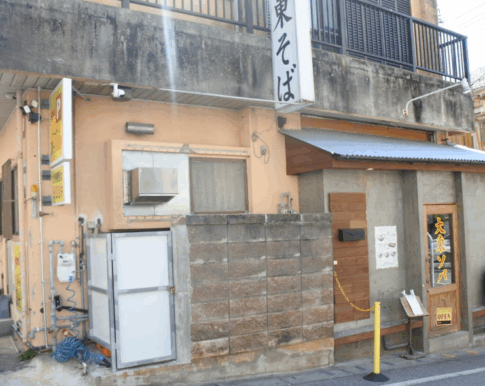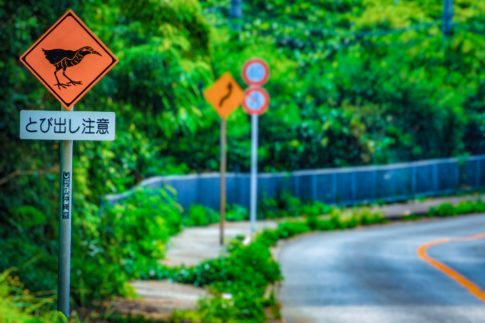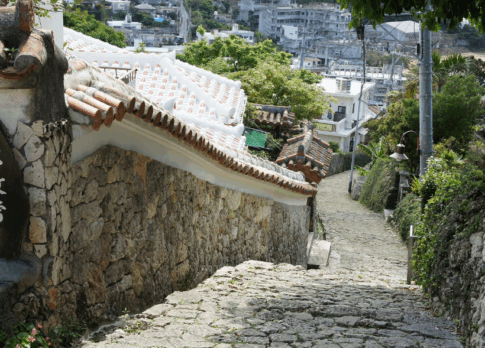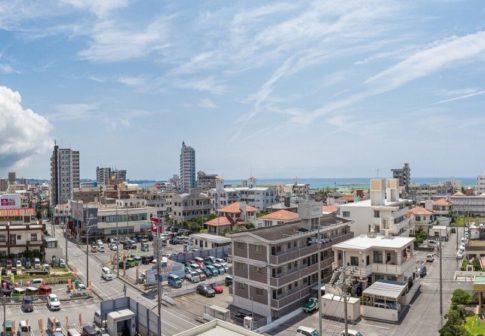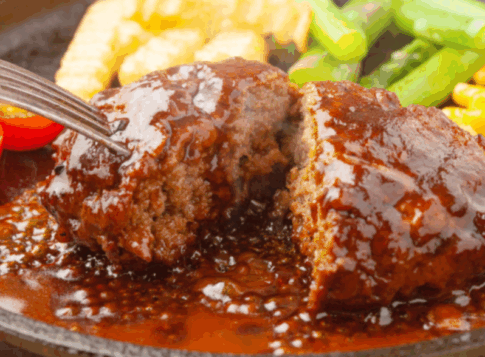About 20 minutes by car from Naha Airport. It is a Taiwanese vegetarian restaurant located near Yachimun Street in Naha Tsuboya. The specialty is Chimaki, a rice cake made of black glutinous rice and filled with many ingredients. It is quite unusual to find a vegetarian restaurant in Okinawa, where it is customary to eat a lot of meat.
Point 1: What is the history of the Taiwanese “Golden Pot Restaurant”?
I was told that there is a Taiwanese vegetarian food restaurant in Okinawa. The place is located near Tsuboya Yachimun Street, about 7 or 8 minutes walk from Kokusai Street in Naha, which I visited the other day. It is very close to Hyatt Regency Naha.
At that time, I had no way of knowing about this restaurant and passed by it with all my heart, but there are many restaurants of interest in this neighborhood, such as Okinawa Soba EIBUN and Hanagasa Shokudo.
The current owner of “Kintsubo Shokudo” is the second generation, and his mother came to Japan from Taiwan to start the diner about 50 years ago.
The term “Taiwanese Eggnog” in “Taiwanese Eggnog” means “vegetarian” in the Chinese-speaking world. As such, the ingredients served at this restaurant, including the famous chimaki, are only vegetables and grains, and no animal products such as meat or fish are used, nor are any stimulating ingredients such as green onions, chives, or garlic.
In Taiwan, 10% of the population is vegetarian, and restaurants displaying the “swastika” symbol are vegetarian. This ranks second only to India in Asia. Originally, vegetarianism started from Buddhist beliefs, and in modern times, more and more people are becoming vegetarian due to animal welfare and health concerns.
However, in Okinawa, where large amounts of meat are consumed, including steaks and pork tebichis, these vegetarian restaurants are quite prominent.
Point 2: What kind of Chimaki is the specialty of “Kintsubo Shokudo”?
So what is the specialty Chimaki of “Kinpots Shokudo” like?
This Chimaki is made of black glutinous rice and filled with soybean meat and beans as big as large pearls, which is a surprisingly large number of ingredients.
After steaming in a steamer for about 15 minutes, when you unfold the wrapped bamboo leaves, you can smell the delicious aroma of the glutinous rice and ingredients along with the nice aroma of the bamboo leaves!
I was a little surprised at the black visual, but when I put my chopsticks into the bowl, I was surprised again at the ingredients that came out in a larger portion than I had imagined! The strange texture of soybean meat, which is neither meat nor tofu, the aroma of fragrant beans, and the flavor that spreads in your mouth the more you bite into it, although only vegetable ingredients are used. The harmony of the mochi rice and the ingredients!
You will become addicted to it.
You will be surprised at the low price of 280 yen per piece, despite the hefty weight and filling.
The store starts selling Chimakis from the time it opens at 8:00 a.m., and they are so popular that they are almost certainly sold out by mid-morning.
If you are a worrier, we recommend that you make a reservation in advance or go when the store opens at 8:00 a.m.
They also do mail orders, but since they do not have a website, orders must be placed by “phone. Like the gentle taste of Chimaki, you can feel the kindness of the store’s staff. They have also recently evolved so that you can also order by Twitter DM.
Point 3: What else is on the menu at “Kintsubo Shokudo”?
So, what else is on the menu at “Kinpots Shokudo”?
In addition to the famous chimaki, “Kinzoku Shokudo” offers a buffet (600 yen) from 8:00 a.m. to 2:00 p.m., bento boxes (600 yen) and a la carte spring rolls, dumplings and fried rice (all for 550 yen). The menu is small, but the taste is what makes it special!
When you come to Okinawa, you tend to eat the specialties with gusto, but there are also opportunities to think about health and beauty at a moment’s notice during your trip, when you are released from your daily routine.
Why not treat your body with this kind of “plain food” for at least one day?


